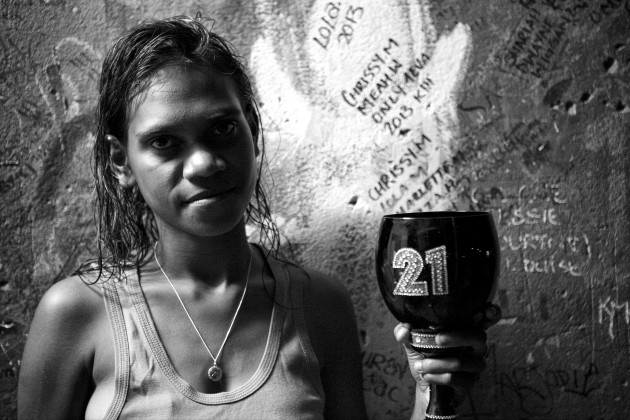Photographer Ingetje Tadros has been living in Broome for twelve years. Five years ago she started recording what she saw in the indigenous communities in and around Broome. The results are strong and confronting to a white population who believe their government is doing all it can for Aboriginal people in this country. “I have always been appalled by the way Aboriginal people were treated. It disturbed and disgusted me, so I decided to have a closer look and started mingling with Aboriginal people,” Tadros says. The photographs are strong and uncompromising in their portrayal of how things are in certain parts of Australia, a country valued for its egalitarianism. These images allow us to see things the way they truly are.

Closing down communities similar to Kennedy Hill is devastating for the people who live in them. It represents a painful physical, emotional, spiritual disconnect for Aboriginal people from their sacred land. I documented the Kennedy Hill community because it is representative of the widespread decimation of Indigenous peoples communities in remote Australia. These photos are evidence of a poverty stricken people who have long endured systemic social and historical human rights abuses. The statics are alarming. Over seven percent of the Kimberley population is homeless, and a staggering ninety percent of this homelessness is comprised of Indigenous people who in the Kimberley and all remote communities are confronted with the physical loss of their communities. As confronting as some of my photographs are here, I hope that they will communicate the plight of the people in them and act as a catalyst for debate and an agent for social change no matter how small.

Tadros first spent time in the small bush camps where Aborigines were carving Boab nuts, where she began taking portraits. Her subjects always received prints of the images, and so a relationship formed, one that became stronger and more intense. She documented daily life such as funerals, hunting, family fights, a wedding and little family moments. But seven months ago, Tadros felt the need to document just one community – Kennedy Hill –which was one of the communities facing closure. Kennedy Hill was just one of 100 communities across Western Australia scheduled for closure by Premier of Western Australia Colin Barnett.

During the course of covering this subject, Tadros says that she’s been appalled that people are living in such poverty in a country like Australia, which is so rich. “People are living in very old and unmaintained houses in Broome, a tourist mecca, where people fly in from all over the world to enjoy this beautiful place,” she says. “The community of Kennedy Hill seemed to me like a different planet situated on ‘pristine real estate’ and I was annoyed about the negativity expressed toward Aboriginal people. I believe that when there are different cultures living together, they should sit and learn from each other and respect each other’s cultures and ways. This is the only way forward.”
In order to help bring greater attention to the issues Tadros has encountered and documented, she to planning to produce a book with help of a crowdfunding campaign. She is working with FotoEvidence Press to create a hardbound photo book that will to give voice to Australia’s aboriginal communities and serve as enduring testimony to the injustice they suffer.
More work by Ingetje Tadros
Crowdfunding campaign













